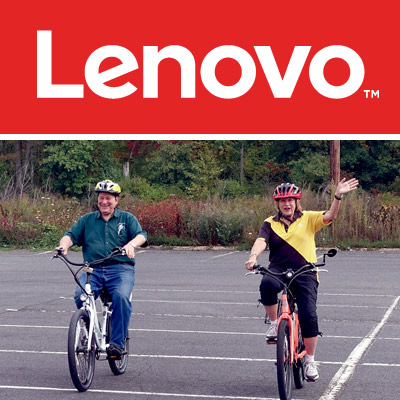
By Gary M. Kaye
Chief Content Officer, Tech50+ (www.tech50plus.com)
From the way 76-year-old Mike Wolf was treated at the recent Interbike International Expo in Las Vegas, you might think he’s something of a superstar. As he walked the show floor he was greeted by scores of manufacturers hoping he would carry their electric assist bikes (more commonly known as e-bikes) in his huge store in Bloomfield, Connecticut. But Wolf’s no superstar, just a bicycle dealer ahead of his time. Wolf, who with his wife Rachel, has been in the bike business since 1955, bet years ago that e-bikes would become popular with the 50-plus crowd. This year is proving out his hunch – by August, Wolf’s Bloomfield Bicycle and Repair Shop had sold more e-bikes than in all of 2015. He says that in the course of three months he was selling one a day. And these are not cheap – ranging from about $1,000 for an entry-level version to upwards of $4,000 for one with advanced features.
Another boomer revolution
When I asked the couple who is buying, Wolf said, “I’m going to say the age is from 50 to 84 and occasionally I’ll get a college guy or I have a group of DWI people, but basically the people that want the e-bike are the people that are at the ages of the 50 and up who aren’t able to do what they did when they were 20 and 25 years of age because obviously, their age and their condition and their weights have grown sizable.” Rachel added, “Exercise can be fun. And so now you’re at an age where you can’t do what you used to do. Going to the gym isn’t all that exciting but now you get on an e-bike and you’re getting that exercise but you’re not hurting any bones and you’re not falling and doing any of that stuff. So surely that’s most of the market.”
Wolf said the vast majority of those over 50 who come into his store to try a bike end up buying one. He likens it to that 1972 television commercial that said, “Try it, you’ll like it.” While e-bikes are selling like hotcakes in Asia and Europe, the US has been slow to catch the wave. Economics is one factor. Commuting by bike is a rational alternative to automobiles in many of those countries. Gasoline can be four or more times as expensive as it is in the US, and cars themselves carry taxes that can double their price. Many also have a bike-friendly infrastructure throughout their cities and countries. Here in the United States, the progress in e-biking has been slower, but is finally picking up steam. It’s still barely a rounding error in the overall sales numbers, but it’s creeping up.
It’s not ‘cheating’
One of the most common arguments against e-bikes is that they are ‘cheating’ and not beneficial. But a recent study published in the New York Times said that’s not the case. Researchers at the University of Colorado in Boulder looked at 20 sedentary volunteers and provided them with pedal assist bikes, which requires effort on the part of the rider. According to the New York Times, “The riders were healthier and more fit now with significantly greater aerobic fitness, better blood sugar control, and, as a group, a trend toward less body fat.” And, adds the Times, “They also reported finding the riding to ‘be a blast’,” according to William Byrnes, the study’s senior author and director of the university’s Applied Exercise Science Laboratory. “It’s exercise that is fun.’”
The industry thinks there are tens of millions of bikes just taking up space in garages and homes, abandoned by their owners who found that fighting hills just wasn’t fun. The e-bike industry is hoping that even if bike commuting is slow to catch on, the aging baby boomers that desperately want to stay in shape or get in shape will turn to e-bikes as a means of fitness and fun.
For a look at some of the hottest new e-bikes for our generation shown at this year’s Interbike show, check out my comparison of models in “E-bikes Lower the Bar at Interbike,” online at https://www.tech50plus.com/e-bikes-lower-the-bar-at-interbike/
Gary Kaye is the creator of Tech50+, (www.tech50plus.com), the leading website covering technology from the Baby Boomer perspective. Kaye has been covering high tech for more than 30 years with outlets including NBC, ABC, CNN and Fox Business. He is a regular contributor to AARP and other websites on issues regarding the nexus of technology, seniors and baby boomers.